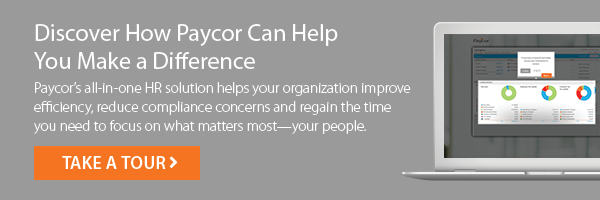While it’s easy to assume that everyone knows when and how frequently to pay employees, the reality is that the laws for pay frequency vary by state. Because of this fact, it is important for businesses to have a clear and consistent payment schedule to ensure fairness and adherence to labor laws and employee expectations. Additionally, a lack of structure around paychecks could throw off the budgeting and financial planning processes, or put a business at risk of legal issues due to possible violations of labor laws.
What is Payment Frequency?
Payment frequency refers to the cadence at which employees receive their paychecks. Each state has its own set of rules and regulations concerning how often employees must be paid, so it’s crucial to stay up-to-date on the latest changes.
If your employees are unionized, then the pay frequency is set usually through a collective bargaining agreement and agreed upon by the employer. If the collective bargaining agreement is not agreed upon, then it must continue to be negotiated.
What Are the Different Types of Pay Frequency?
There are four common payment schedules which employees typically use. They include:
- Weekly – 52 paychecks per year
- Biweekly – 26 paychecks per year
- Semi-monthly – 24 paychecks per year
- Monthly – 12 paychecks per year
Common Pay Frequency Laws
Federal law only requires that the monthly payday requirements be consistent.
While a state may require monthly paychecks, a company can increase their pay frequency to bi-monthly, bi-weekly, or even provide a weekly payday. If their state requires them to pay every other week, then they cannot reduce the pay frequency to a monthly basis within a calendar month. The state law sets the minimum frequency.
Complex Pay Frequency Laws
Sometimes it is not as clear cut as a weekly, bi-weekly, semi-monthly payday, or monthly payday. It can depend on the classification of employees. A state may require that an employee must be paid within a certain number of days on each paycheck. Manual workers sometimes fall under a different category, such as needing to receive their paychecks on a weekly basis. Again, this goes by the state laws.
State Pay Frequency Requirements
The following table is in reference to the Department of Labor’s State Payday Requirements.
| State | Weekly | Bi-weekly | Semi-monthly | Monthly |
|---|---|---|---|---|
| Alaska | X | X | ||
| Arizona | X | |||
| Arkansas | X | |||
| California | X | X | X | X |
| Colorado | X | |||
| Connecticut | X | |||
| Delaware | X | |||
| District of Columbia | X | |||
| Georgia | X | |||
| Hawaii | X | X | ||
| Idaho | X | |||
| Illinois | X | X | ||
| Indiana | X | X | ||
| Iowa | X | X | X | X |
| Kansas | X | |||
| Kentucky | X | |||
| Louisiana | X | X | ||
| Maine | X | |||
| Maryland | X | X | ||
| Massachusetts | X | X | ||
| Michigan | X | X | X | X |
| Minnesota | X | X | ||
| Mississippi | X | X | ||
| Missouri | X | |||
| Nevada | X | X | ||
| New Hampshire | X | X | X | X |
| New Jersey | X | X | ||
| New Mexico | X | X | ||
| New York | X | X | X | |
| North Dakota | X | |||
| Ohio | X | |||
| Oklahoma | X | X | ||
| Oregon | X | |||
| Rhode Island | X | X | X | |
| South Dakota | X | |||
| Tennessee | X | |||
| Texas | X | X | X | |
| Utah | X | X | ||
| Vermont | X | X | X | |
| Virginia | X | X | X | |
| Washington | X | |||
| West Virginia | X | |||
| Wisconsin | X | |||
| Wyoming | X |
According to Montana Statute and Pennsylvania Statute, if an employer has not established a time period or time when wages are due and payable, the pay period is presumed to be semi-monthly. In Nebraska and North Carolina, employers must simply set a regular scheduled pay cadence or payday.
Which States Have No Pay Frequency Law?
- Alabama
- Florida
- South Carolina
These three states have no laws related to pay frequency. In this case, employers must adhere to federal guidelines and make the pay frequency consistent in whatever way they decide to pay their employees, whether it is weekly wages, monthly wages, or anywhere in between.
How Can a Company Change its Pay Frequency?
Companies are not always in control of when or how often they pay their employees. However, there may be instances when a company needs to change its payment frequency for certain reasons.
A company must meet the following criteria in order to change pay frequency:
- Changes must be permanent.
- There must be a legitimate business reason that can be proven.
- There can be no delay in the payment of wages for employees due to the change.
- Companies cannot use a change in pay frequency to avoid overtime or minimum wage payments.
If all of the criteria are met, then you must know how to change pay periods, including setting up the right team, setting a date, doing your legal homework, informing employees, and reviewing all legal contracts.
Getting Paid
Here’s everything else you need to know about managing employee payroll.
Wages
Wages are based on several factors. The most traditional ways people earn wages are by the hour or salary. However, there are other ways wages are earned such as commission, investments, contract work, allowance, gifts, and more.
Payday Notice
A payday notice is a document that is available to all employees and lets them know when they will receive their paychecks. Regular payday notices help employees understand their pay periods, budget their money, and plan for expenses in advance.
Most employers provide an electronic version of a payday notice so employees can easily access it and keep track of their pay dates. Employers may also provide a paper version of the payday notice to ensure employees have all the necessary information. By providing clear and accurate information on when payments will be made, payday notices help employees manage their finances and plan for the future.
Pay Periods
A pay period is fixed and in most cases happens weekly, bi-weekly, semi-monthly, or monthly. The time between each pay period determines the amount of the paycheck. For example, if you are paid bi-weekly, your paycheck would be based on the two weeks between each pay period.
Pay Statements
A pay statement includes valuable information that is up to date, based on the year. They will include year-to-date earnings, taxes withheld, and any other withholdings. Pay statements also allow an employee a way to check that their employer is accurately reporting their wages and taxes. Employees may receive their pay statement in a digital format or by mail, depending on the company’s policy.
Agreed Wage
An agreed wage is a great way to ensure both you and the employee are happy with the arrangement – typically either salary or hourly rates. It allows for a sense of mutual respect between parties and can help build trust in an employer-employee relationship.
Pay Raises
When the payment of wages increases for an employee, it’s important to have a system in place to help automate this on their next paycheck. Pay increases can be granted to employees as part of their annual review, as recognition for good performance, in response to inflation, and for reasons specific to your company.
Paychecks
Paychecks can be sent in multiple formats including paper checks, direct deposits, and payroll debit cards.
Direct deposits are the safest way to receive pay because they eliminate the need for a paper check and reduce the risk of fraud or theft. Direct deposit also ensures funds arrive in your employees’ accounts quickly and reliably.
Pay cards or payroll debit cards can also be used to receive paychecks and are becoming increasingly popular. These cards work like bank debit cards and allow employees to withdraw money from ATMs or use the funds at any store that accepts Visa or Mastercard.
Non-Sufficient Funds (NSF)
There is a penalty for each day that an insufficient funds paycheck goes unpaid to the employee. If it’s not paid immediately, then the penalty is that the employer owes the employee one day of work pay for each day of unpaid wages, or 30 days of pay – whichever is the shortest amount of time.
Final Paycheck
Final paycheck laws by state vary. In most cases, the final check includes all wages for the current pay period and any unpaid PTO that they legally earned based on their salary or an hourly wage. It is usually mailed or sent by direct deposit immediately, or when the payday requirements are already set. However, this can vary by state. In some cases, it is paid on the next business day.
Frequently Asked Questions
Still have questions regarding payroll frequency? Read on.
What Are the Federal Guidelines for Pay Frequency?
While federal law requires pay frequency to be consistent, there’s no law in place that dictates the cadence. Whether paychecks are issued weekly, bi-weekly, semi-monthly, or monthly is up to each state.
What Happens if a Company Does Not Comply with Pay Frequency Laws?
Penalties for not complying with pay frequency laws vary by state, but can include fines, civil lawsuits, and reputational damage.
What is the Best Pay Schedule for Small Businesses?
This varies based on business needs, but a bi-weekly schedule provides a good balance of reduced payroll processing administration and a consistent cash flow.
How Does Pay Frequency Affect Employee Satisfaction?
More frequent pay (weekly or bi-weekly) generally increases employee satisfaction by providing better cash flow management for workers and reducing financial stress. This is especially important for hourly workers and lower-income employees.
What Are the Benefits and Drawbacks of Different Pay Frequencies?
Weekly pay keeps employees happiest, but increases administrative costs. Bi-weekly balances employee satisfaction with manageable processing. Monthly reduces processing costs, but can strain employee finances. Semi-monthly aligns with benefit deductions, but can complicate overtime calculations.
How Paycor Helps
With Paycor’s solutions, you can trust that your employees are paid accurately and on time – giving them peace of mind and ensuring compliance with labor laws. With our streamlined processes and integrated technology, you’ll be able to spend more time on strategic decision-making and less time worrying about payroll — whether you manage payroll frequency for remote employees, an in-house workforce, or a mix. Take a guided tour to learn more about Paycor HR and Payroll software.










